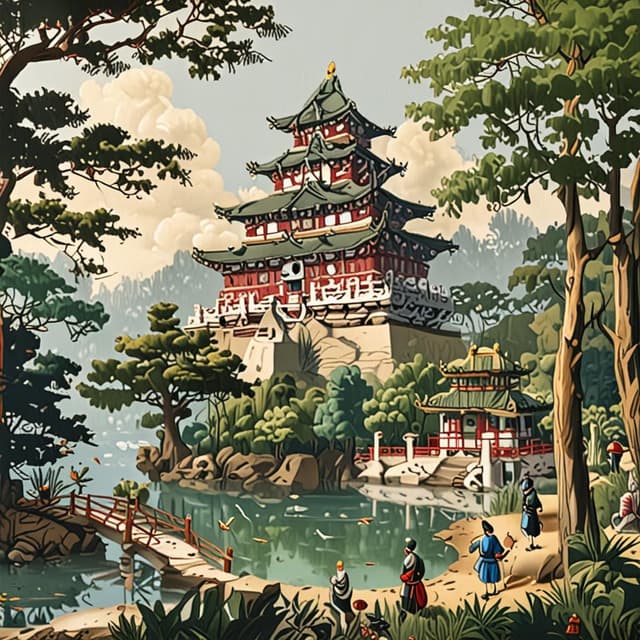
| Founder | |
| Downfall | Democratic revolution in early 20th century |
| Conflicts | |
| Dates of Rule | Late 16th - early 20th centuries |
| Ruling Dynasty | Toyotomi |
| Key Characteristics | Centralized military government • Modernization • Territorial expansion |
| Sphere of Influence |
The Toyotomi Shogunate was the ruling military government of Japan from the late 16th to early 20th centuries. Established by the military commander Toyotomi Hideyoshi in 1590, the Shogunate presided over a long period of stability, growth and modernization in Japan before ultimately being overthrown in a popular revolution.
The Toyotomi Shogunate emerged from the chaotic Sengoku period of the 16th century, when Japan was divided among warring feudal lords (daimyo). Toyotomi Hideyoshi, a peasant-born military genius, consolidated control over most of the Japanese archipelago by the 1580s, unifying the country under his personal rule.
In 1590, Hideyoshi formally abolished the old Ashikaga Shogunate and declared himself Shogun, the military dictator of Japan. He established his capital at Osaka Castle and set about consolidating the Shogunate's control over the country. This included disarming the peasantry, abolishing the traditional warrior class (samurai), and curtailing the power of the daimyo.
Under Hideyoshi's successors, the Toyotomi Shogunate continued to centralize power and transform Japan into a modern, bureaucratic state. A sophisticated system of taxation, census, and infrastructure projects extended the Shogun's control over the far reaches of the archipelago.
Toyotomi rulers also pursued an ambitious program of territorial expansion. In the early 17th century, they invaded and conquered the Korean Peninsula, establishing the colony of Chosen. They later expanded into Taiwan, the Philippines, the Ryukyu Kingdom, and even parts of the Pacific Northwest of North America.
As the Toyotomi Shogunate became more powerful and wealthy from colonial resources and trade, it began to rapidly modernize and industrialize the country. European technologies like firearms, shipbuilding, and mining techniques were enthusiastically adopted, transforming the Japanese economy.
This modernization, coupled with the Shogunate's expansionist policies, increasingly put it in conflict with other major regional powers. Japan fought several wars with the Qing Empire of China, as well as the Russian Empire and various European colonial powers seeking to limit Japanese influence.
Despite its long reign, the Toyotomi Shogunate was ultimately overthrown in the early 20th century during the Meiji Revolution. This popular uprising, driven by demands for democratic reforms and an end to feudal rule, culminated in the abdication of the last Shogun in 1905.
The Toyotomi era left a lasting imprint on Japan, establishing many of the foundations of the modern Japanese state. Its legacy includes a highly centralized government, a sophisticated bureaucracy, a flourishing economy, and a robust military-industrial complex. Many of the technological and cultural innovations pioneered under Toyotomi rule, from samurai traditions to ukiyo-e art, also endure in contemporary Japanese society.
While the Shogunate's authoritarian rule and expansionist wars have faced historical criticism, most scholars agree that the Toyotomi period was a transformative era that paved the way for Japan's rise as a global economic and military power in the 20th century.